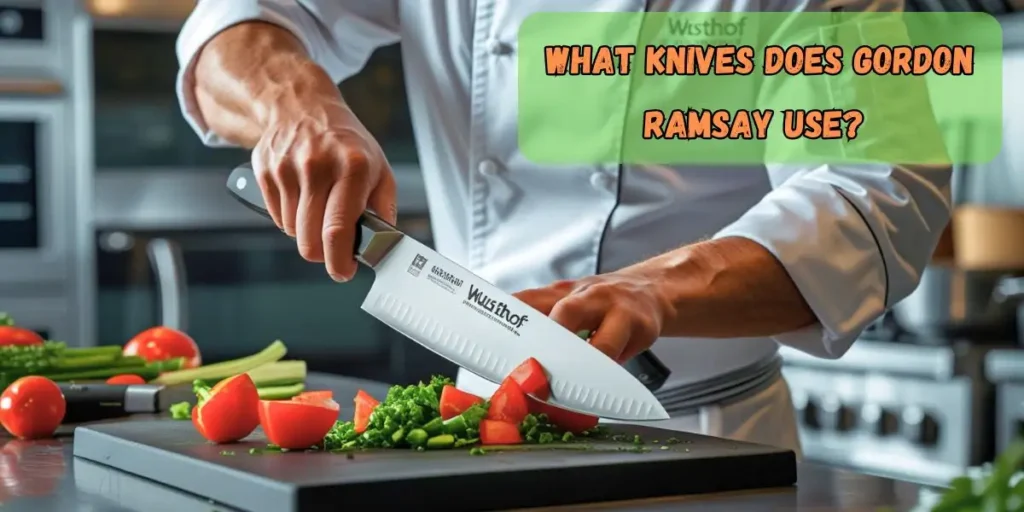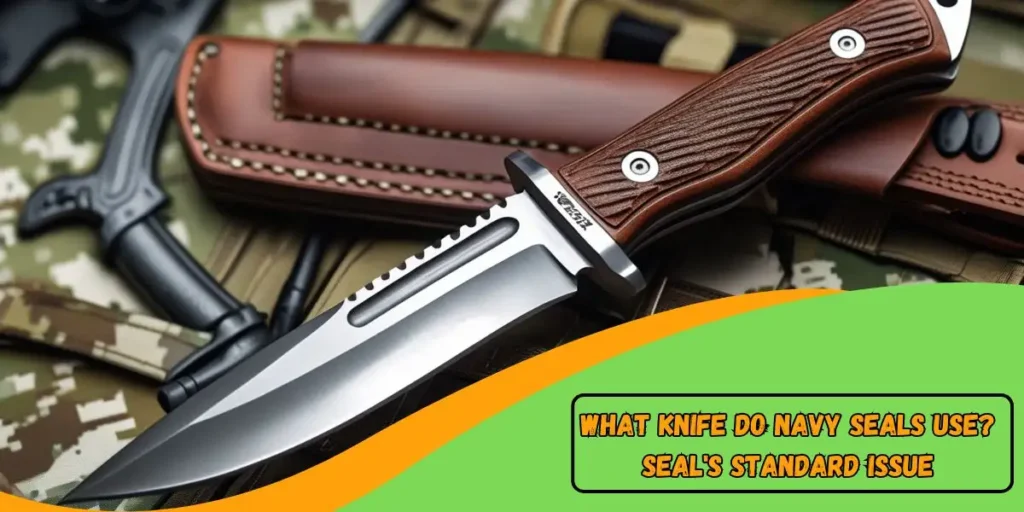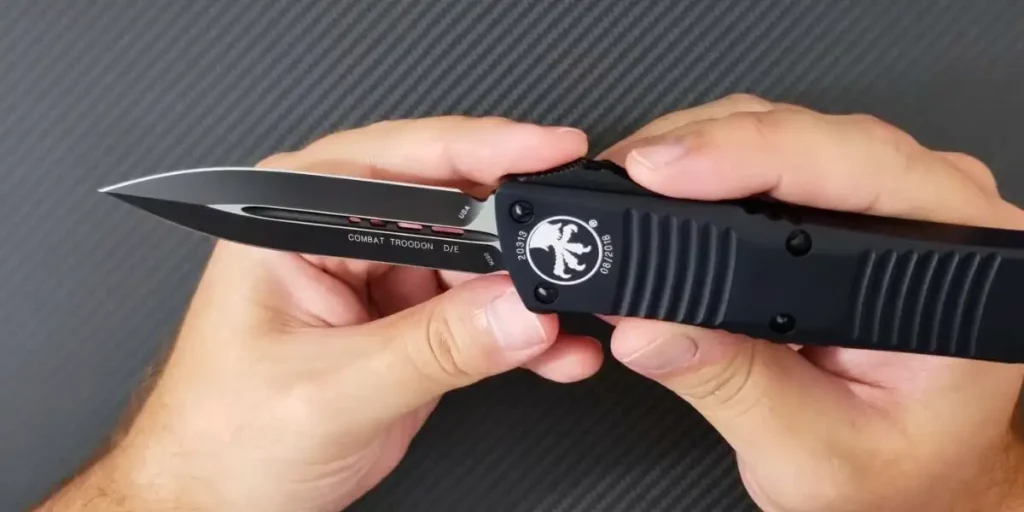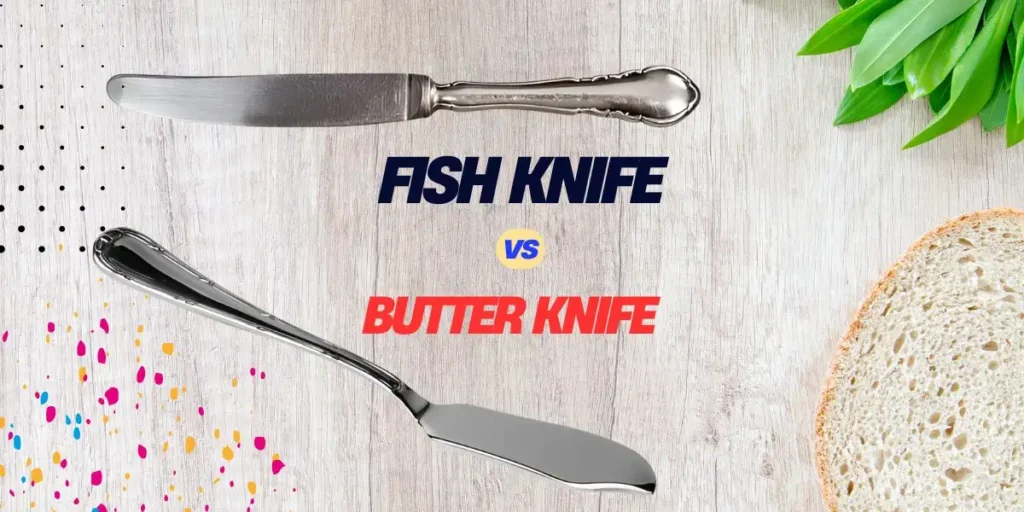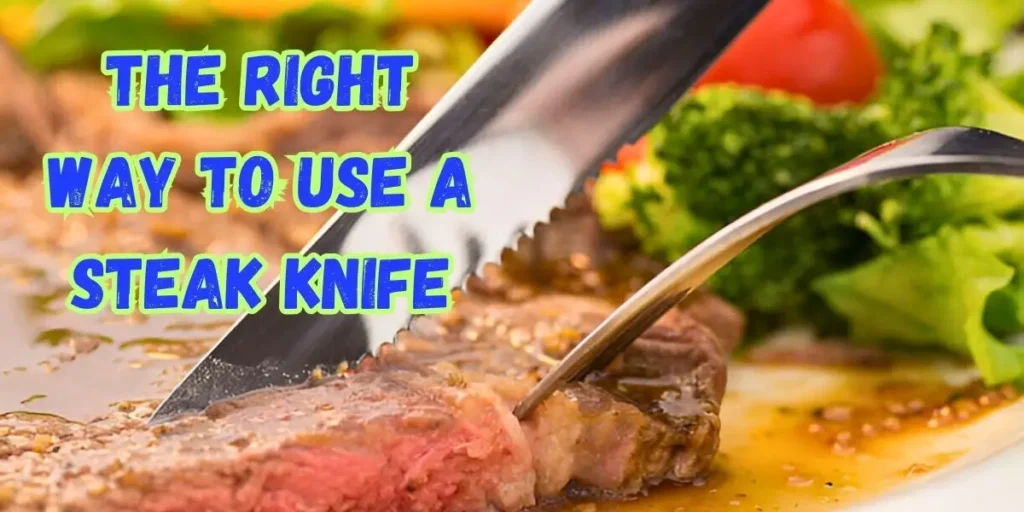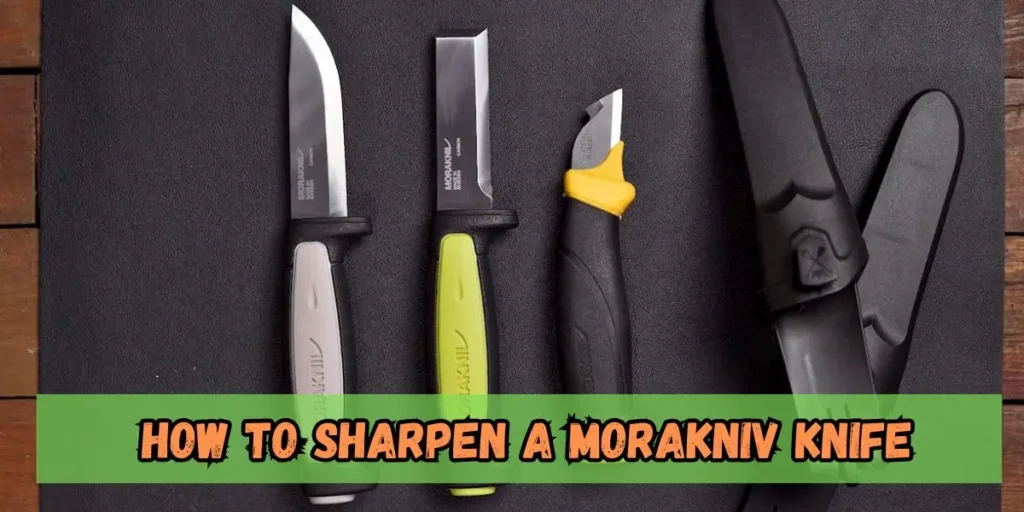Fish Knife vs Butter Knife: Key Differences and Uses Explained
Although a fish knife vs a butter knife may look similar, they are different. Knowing how they differ can improve your dining experience. These tools are not just about looking fancy—they make eating more manageable and enjoyable.
A fish knife has a pointed tip and a wide, curved blade. It helps remove bones and separate fish meat without breaking its soft texture. On the other hand, a butter knife has a dull edge and a rounded tip. It is perfect for spreading butter or jam on bread.
Using the right knife is not just about manners but also about making your meal smoother. It shows you understand how to use tableware well.
Want to know why these two knives matter? Let’s examine what makes them unique and how they can add value to your flatware set.
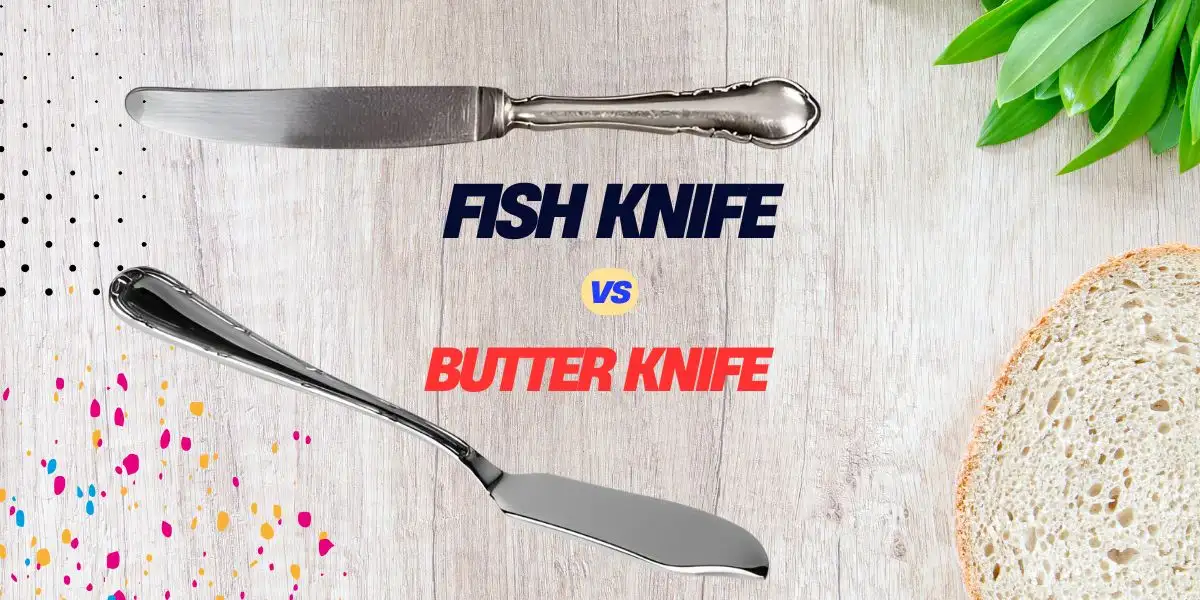
What is a Fish Knife?
A fish knife is a tool made for eating fish. It is different from other knives. Its design helps you handle fish with care. Let’s look at its features.
How Does a Fish Knife Look?
A fish knife has a wide, flat blade. The blade curves slightly to make it easy to use. The tip is sharp and pointed. This helps you remove fish bones. Some fish knives also have a small notch. The notch helps lift the fish’s skin or pick out small bones.
What is a Fish Knife Used For?
A fish knife is not for cutting tough food. It works best with soft, flaky fish. The knife helps you separate the fish from its bones. It also lets you scoop up the fish without breaking it into pieces.
Why Should You Use a Fish Knife?
A fish knife makes eating fish simple and neat. It helps you avoid any mess. Using the right knife shows good manners. It also makes formal dinners more pleasant.
What is a Butter Knife?
A butter knife is a small tool used at the dining table. It is simple and easy to use, and while it may not look fancy, it is beneficial.
How Does a Butter Knife Look?
A butter knife is small and has a smooth blade. It is not sharp, so it is safe to use. The tip is round and soft. This design makes it perfect for spreading foods. However, it is not made for cutting or slicing more complex foods.
What is a Butter Knife Used For?
A butter knife is mainly used to spread butter or soft spreads, such as jam, cream cheese, or similar foods. It is often placed on bread plates during meals. Butter knives are also helpful for spreading butter on toast at breakfast. Their dull blade helps spread evenly without tearing the bread.
Why Should You Use a Butter Knife?
Using a butter knife keeps things tidy, helps you avoid mess while serving yourself, and shows good manners at the table. Butter knives are standard in both casual and formal meals.
Key Differences Between a Fish Knife vs a Butter Knife
A fish knife and a butter knife may look alike, but they are different. Each knife is made for a specific purpose. Let’s break down how they are not the same.
Design and Shape
The shape of these knives is very different. A fish knife has a broad blade and a pointed tip. The blade curves slightly to help you separate fish meat from bones and skin. Some fish knives also have a notch for lifting fish skin.
A butter knife, however, has a dull blade and a round tip. Its smooth edge is perfect for spreading butter, jam, or cream cheese without tearing bread. Butter knives are smaller and more straightforward.
Purpose and Use
Fish knives are made for eating fish. They handle the soft, flaky texture of fish without breaking it. They help remove bones and scoop meat neatly.
Butter knives, on the other hand, are used to spread soft foods. They are not made for cutting or handling delicate textures like fish. However, butter knives are standard at breakfast and on bread plates.
Material and Finish
Fish knives are usually made of shiny metal, like stainless steel. They often have a polished, elegant look appropriate for formal dining; some even have decorations.
Butter knives are plainer. They are also made of stainless steel but are more straightforward in style.
Dining Etiquette
Fish knives are often used in formal dining. They make eating fish easier and show good table manners. On the other hand, butter knives are used in casual and formal meals. They are usually placed on the bread plate.
When to Use a Fish Knife vs a Butter Knife
Knowing when to use a fish knife or a butter knife is simple. Each knife has a job, and using the right one makes eating easier. Let’s learn more about when to use them.
When to Use a Fish Knife
A fish knife is used to eat fish. It works best with soft, flaky fish. The pointed tip helps remove small bones, and the wide blade makes it easy to scoop the meat. Fish knives are great for dishes like fish fillets or whole fish.
You will often see fish knives at formal dinners. They show good manners and make eating fish neat and straightforward. If you’re hosting a fancy meal, add fish knives to the table when serving fish courses.
When to Use a Butter Knife
A butter knife is used to spread soft foods. It works well with butter, jam, or cream cheese. The dull edge won’t tear bread. Butter knives are standard at breakfast or any meal with bread rolls. They are often placed on the bread plate.
Using a butter knife keeps your table neat. It helps you avoid crumbs or mess while serving spreads.
Care and Maintenance for Fish Knife vs Butter Knife
Taking care of fish knives and butter knives is simple. Proper care keeps them clean and ready to use. It also helps them last longer. Let’s go step by step.
How to Clean Fish Knives
Fish knives are made from stainless steel or shiny metals. After each use, wash them with warm, soapy water. Use a soft sponge to clean off food. Do not use rough scrubbers, as they can leave scratches.
If the knife has a design or decoration, clean it gently. Dry the knife right after washing it to prevent water stains. Some fish knives can be washed in the dishwasher, but it’s best to check the maker’s advice first.
How to Clean Butter Knives
Butter knives are easy to clean. Wash them with soap and water. Since butter knives touch sticky spreads, rinse them well to remove all food. Dry them quickly to keep them shiny and clean.
How to Store Knives
Store knives in a dry, safe place. Use a cutlery tray to keep them neat and prevent scratches. A case protects special or fancy knives from damage.
Modern Trends and Alternatives for Fish Knives and Butter Knives
Fish and butter have been part of dining for a long time. But as habits change, some people use them less. Let’s look at how things are different today.
Do We Still Need Fish Knives?
Fish knives are still used in formal meals. They help make eating fish neat and easy. However, in casual meals, many people use a regular knife and fork instead. This works well for most dishes and saves time. Modern homes often skip fish knives in their cutlery sets.
What About Butter Knives?
Butter knives are still popular. They are great for spreading butter, jam, or cream cheese and are often seen at breakfast tables. However, in informal settings, people may use a regular knife or even a spoon instead of a butter knife.
Alternatives to Traditional Knives
Today, many people prefer multi-purpose knives. These knives can be used for fish, butter, or other tasks. They save space and are perfect for busy lifestyles. Such designs are growing more common in modern kitchens.
Why Trends Are Changing
People now want simple and easy-to-use tools. Versatile utensils are more practical for everyday meals. While fish and butter knives are still helpful, many prefer tools that require less care.
Conclusion
Knowing the difference between a fish knife and a butter knife is helpful. These tools have specific uses; using them immediately makes meals more manageable and enjoyable.
A fish knife is made for fish. Its wide blade and pointed tip help remove bones and handle soft fish meat. This knife is well-suited for formal meals and keeps things neat. Using it shows good table manners and attention to detail.
A butter knife is simple but very useful. It spreads soft foods like butter and jam. Its dull blade keeps things clean and avoids mess. Butter knives are great for breakfast or meals with bread.
Using the right knife makes your meal more pleasant and shows you understand good dining habits. Whether it’s a fancy dinner or a casual meal, choosing the correct knife adds a touch of thoughtfulness. Small details like these make a big difference.
FAQs: Fish Knife vs. Butter Knife
A fish knife is for eating fish. It has a pointed tip and a wide blade. A butter knife spreads soft foods and has a dull edge.
Yes, but a fish knife is better for fish. It removes bones and handles soft meat neatly, while a butter knife may be less effective.
Fish knives are primarily used at formal dinners. For casual meals, many people use regular knives instead. However, fish knives are still valued for special occasions.
Most cutlery sets have butter knives. They are essential for spreading butter, jam, or other spreads, especially at breakfast or meals with bread.
Wash both in warm, soapy water. Dry them quickly to avoid stains—hand-wash decorative knives to protect their finish and design.
Yes, both are usually made of stainless steel. Fish knives may have a polished finish, while butter knives have more straightforward designs.
Related Posts
-
 23 Feb 2025 KnifeWhat Is a Slicing Knife Used For? Discover How It Makes Cooking Easy!
23 Feb 2025 KnifeWhat Is a Slicing Knife Used For? Discover How It Makes Cooking Easy! -
 16 Feb 2025 KnifeWhat knives does Gordon Ramsay use? Check out his premium knives
16 Feb 2025 KnifeWhat knives does Gordon Ramsay use? Check out his premium knives -
 15 Feb 2025 KnifeWhat Knife Do Navy Seals Use? SEAL's Standard Issue 2025
15 Feb 2025 KnifeWhat Knife Do Navy Seals Use? SEAL's Standard Issue 2025 -
 08 Feb 2025 KnifeWhat Knife Does John Wick Use? Learn About His Deadly Blade
08 Feb 2025 KnifeWhat Knife Does John Wick Use? Learn About His Deadly Blade -
 30 Jan 2025 KnifeWhat is a Nakiri Knives Used For? Benefits & Features Explained
30 Jan 2025 KnifeWhat is a Nakiri Knives Used For? Benefits & Features Explained -
 12 Jan 2025 KnifeFish Knife vs Butter Knife: Key Differences and Uses Explained
12 Jan 2025 KnifeFish Knife vs Butter Knife: Key Differences and Uses Explained -
 11 Jan 2025 KnifeHow to Sharpen Global Knife: A Quick Guide 2025
11 Jan 2025 KnifeHow to Sharpen Global Knife: A Quick Guide 2025 -
 10 Jan 2025 KnifeDecoding the Iconic Why So Serious Joker Knife
10 Jan 2025 KnifeDecoding the Iconic Why So Serious Joker Knife -
 09 Jan 2025 KnifeThe Right Way to Use a Steak Knife: Tips and Tricks
09 Jan 2025 KnifeThe Right Way to Use a Steak Knife: Tips and Tricks -
 08 Jan 2025 KnifeHow to Sharpen a Morakniv Knife Safely and Effectively
08 Jan 2025 KnifeHow to Sharpen a Morakniv Knife Safely and Effectively


